Michael Case
Archivist
USO
Inside the Archives Editor: Dara Baker, U.S. Naval War College
The USO (United Service Organizations) is an organization focused on providing support, programs, and entertainment to active duty service personnel and their families. With 2016 being our 75th Anniversary, we have the unique opportunity to dive into our past.
The USO Historical Image Collection holds over 1,000 images relating to USO overseas activities from 1941-1947, documenting its first activities outside of the continental U.S. in Hawaii in January of 1942 and continuing through (what turned out to be) the organization’s temporary deactivation December 1947. The image collection is primarily made up of photographs but it also includes a collection of location postcards, posters, and a variety of illustrated promotional material.
Textual documents of the USO experience in Hawaii during the period are primarily covered in Volume 3 of the seven-volume History of the USO Overseas Department 1942-1947. This volume is mostly composed of USO annual reports for the territory of Hawaii. The “overseas” volumes are a part of the larger 30-volume set that comprises the official history of the USO.
We are fortunate that any records survive at all. Many records were disposed of as a result of the deactivation in 1947. Then in the1970s, a flood at the U.S.O. World Headquarters destroyed a large percentage of what remained. Several headquarters moves in the 70s, 80s, and 90s all contributed to even more lost and misplaced records.
The image collection contains photos relating to every branch of service all across the world. That the Hawaii records survive with comparatively much less complete representation from the continental USO in the collection is partly due to the decentralized structure of the USO. For the most part in the continental U.S., USO records were kept at the local and regional level and the degree of cooperation by the hundreds of local operations varied greatly. The overseas operations were fewer in number had more oversight from world headquarters, then in in New York City. The decision to focus on the records of the USO in Hawaii 1942-1947 illustrates both the history of the Navy and Marines in the Hawaiian Islands in general as well as highlighting the history of the USO’s mission to support the Navy and Marines by providing respite, recreation, and entertainment to servicemen and women in the place where the Second World War began for the United States.
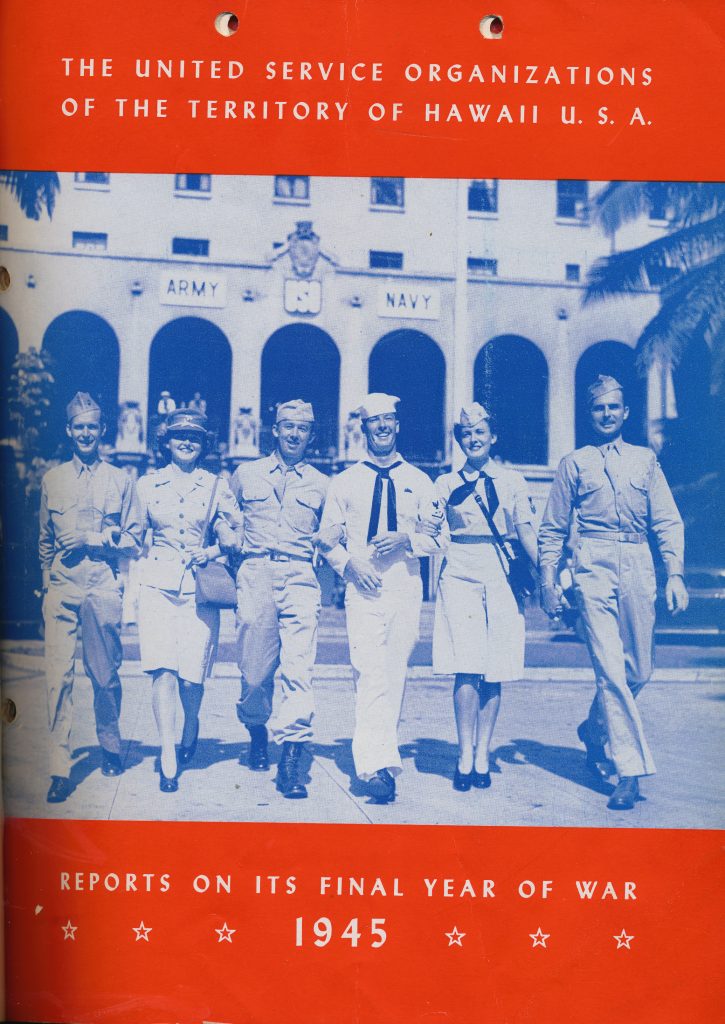
The cover of the 1945 Territory of Hawaii Report. The USO Army & Navy Club the busiest in the territory can be seen in the background.
After the attack on Pearl Harbor, the USO needed to expand quickly. The YMCA (one of the founding member organizations of the USO) offered its building in Honolulu to the USO for the duration of the war. This first location in Hawaii became known as the USO Army & Navy Club, eventually becoming the busiest and most visited of the 48 clubs dotted across the Hawaiian territory. In 1945 the USO Army & Navy Club would host over six million enlisted men and women. Honolulu itself was home to eight USO locations at the peak of operations in 1945.
Prior to the war the USO Victory Club was a Japanese department store. Known as the House of Mitsukoshi it was modeled after the Mitsukoshi store in Tokyo. After the attack on Pearl Harbor the building was handed over to the USO by the Federal Government. The Victory Club provided almost every type of rest and relaxation (R&R) opportunity that the USO offered. The building featured unique amenities which included escalator and a roof-top garden.
The USO was open to all members of the armed forces regardless of gender, religion, or race. The challenge the USO faced to fulfill its mission to “provide services to members of the armed forces from all walks of life” who were serving in a segregated military is addressed in the 1945 Annual Report for the Territory of Hawaii:
Early in its development, The USO realized that in the Territory there was an unique, challenging, and very contradictory racial situation. In 1945 [USO] Special Services realized a dream in the formal opening, May 2nd, of the USO Rainbow Club. The Rainbow Club was a permanent operation in the heart of Honolulu whose philosophy was service to every G.I. but most particularly to the fellow who thought the USO was for “everyone except me…
The Rainbow Club became one of two clubs in the Honolulu area specifically focused on welcoming enlisted men of all backgrounds. The 1945 report concluded with:
“The USO did not, through the Rainbow Club solve the racial problems of the 186,307 men and women in uniform who were its guests in 1945. But it gave them the impetus to think and to share, without which there can be no solution.”
For women in the service, the USO operated two clubs in the Honolulu area. The Service Women’s Lounge and the Hui Welina club.
While the USO in Honolulu and surrounding areas received the bulk of the attention every island in the territory was served by the USO.
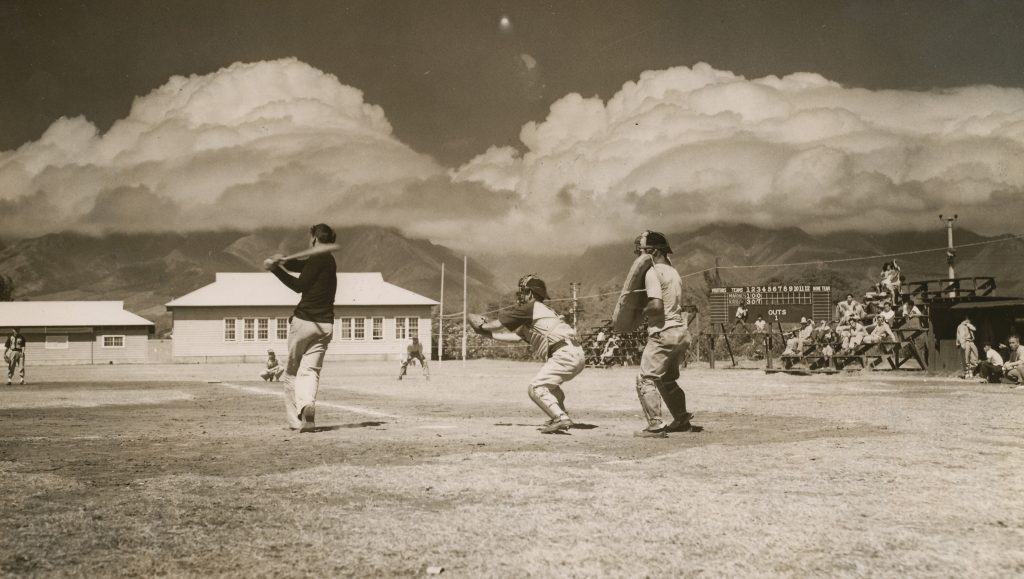
Marines and Seabees play Baseball in a USO sponsored league on one of several baseball fields on Maui.
In addition to USO-produced images, the USO Historical Image Collection also contains donated photographs from outside the organization. In 1981 a photo was donated by Loretta Maynard who was a Marine stationed in Honolulu during Victory over Japan (VJ) Day. The note on the back reads “V.J. Day Down Honolulu Way 1945 I was there and so was the U.S.O. Many Thanks!” Loretta Maynard U.S.M.C.
At the close of the war, operational tempo slowed. With an uncertain future, only the USO Army & Navy Club and four other clubs remained operational through 1947. The importance of the USO in Hawaii to the war effort was summed up at the beginning of the 1943 USO Hawaii Annual Report in a statement by US Navy Commander in Chief of the Pacific Fleet, Admiral Chester W. Nimitz:
This service is not alone a contribution to the individual soldier, sailor, marine, coast guardsman and merchant mariner…it is a genuine contribution towards winning the war.
The USO Archives is delighted to show a small sample of what we house through the International Journal of Naval History. The USO archival collection is not currently open to the public. For further information about the collection or to find out more about any of the photographs included here, please contact Michael Case, USO Archivist at mcase@uso.org.
(Return to August 2016 Table of Contents)

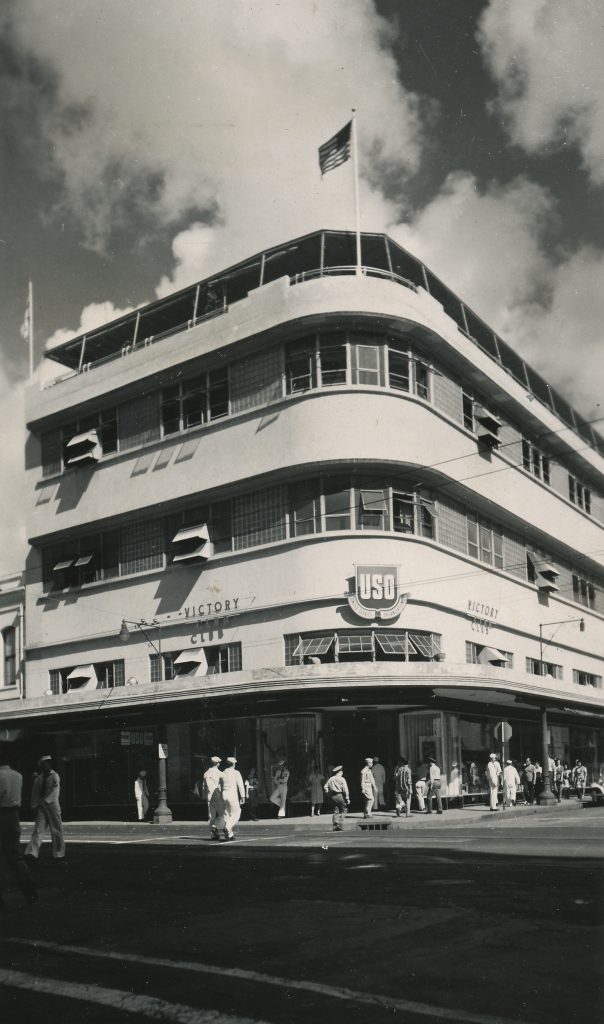
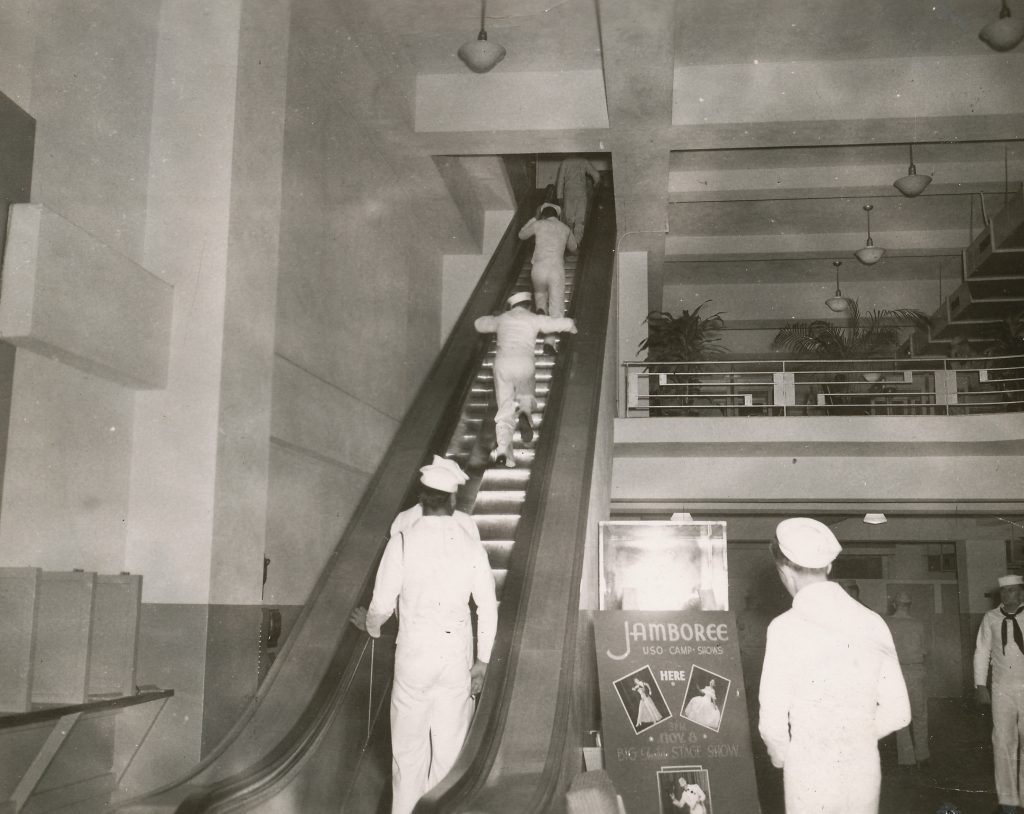
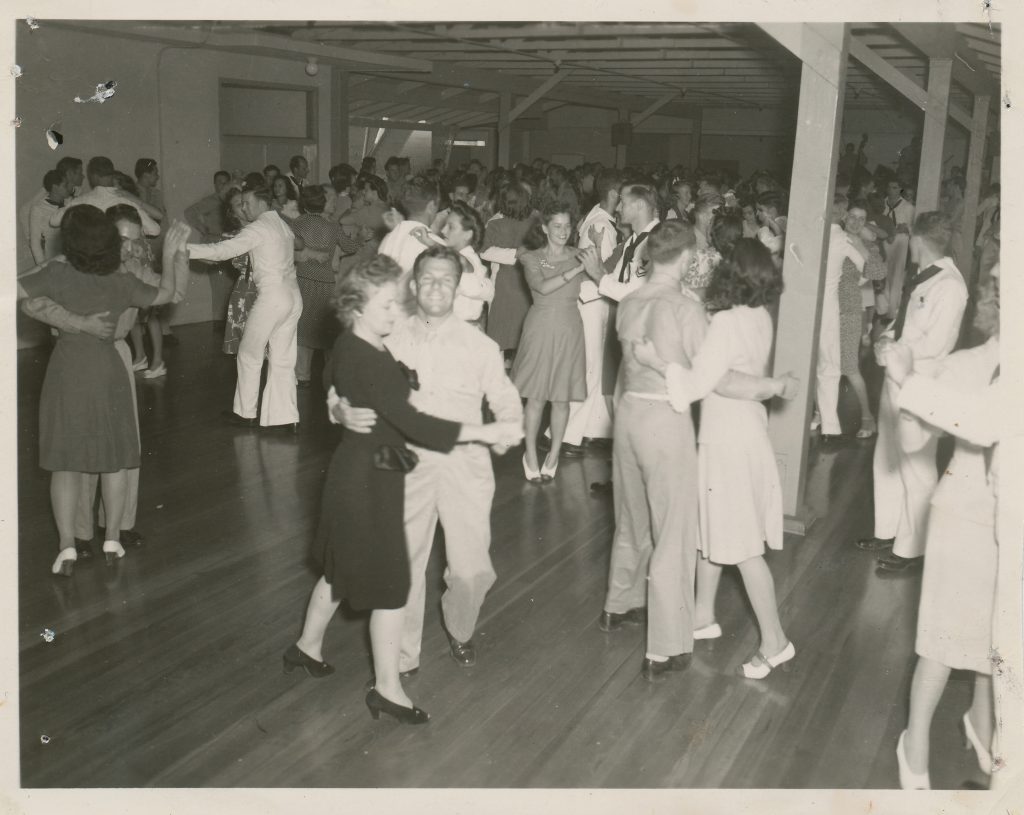
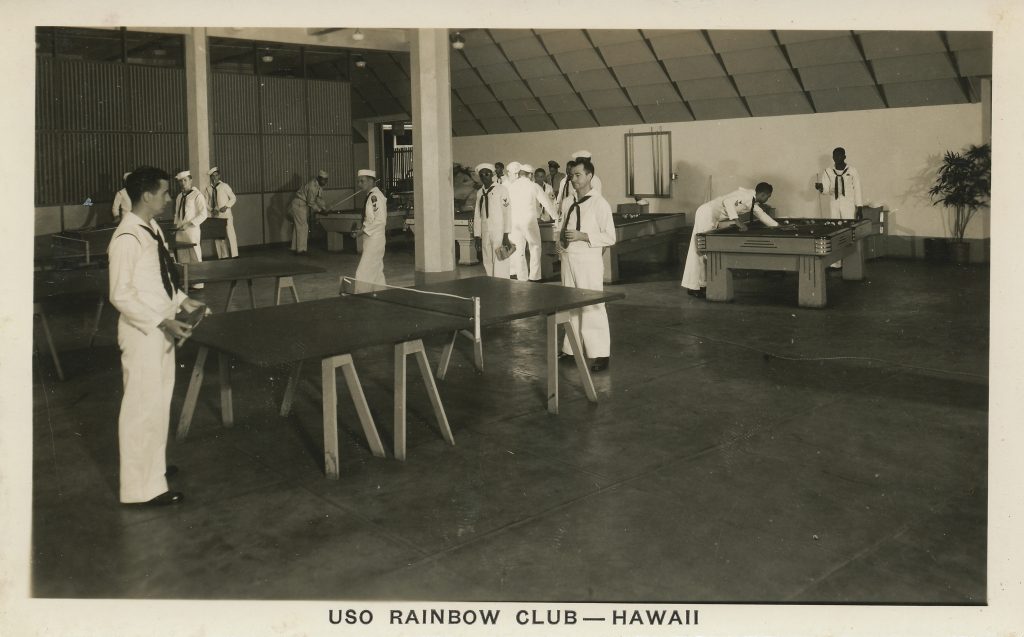
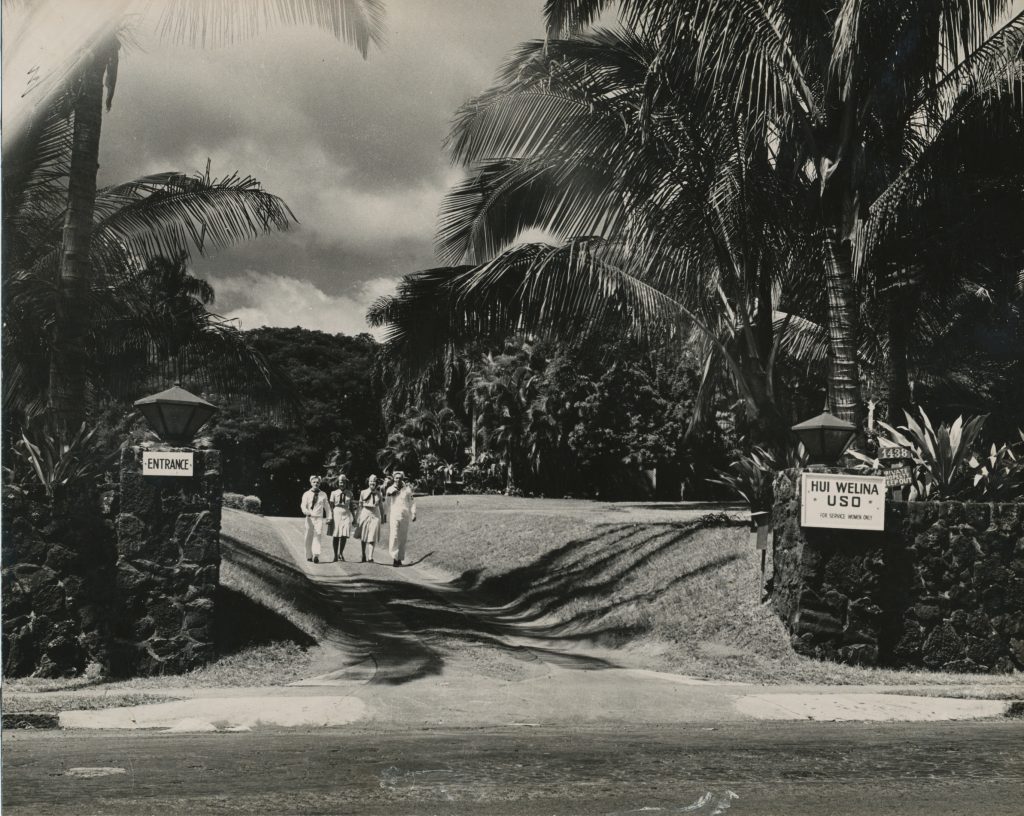
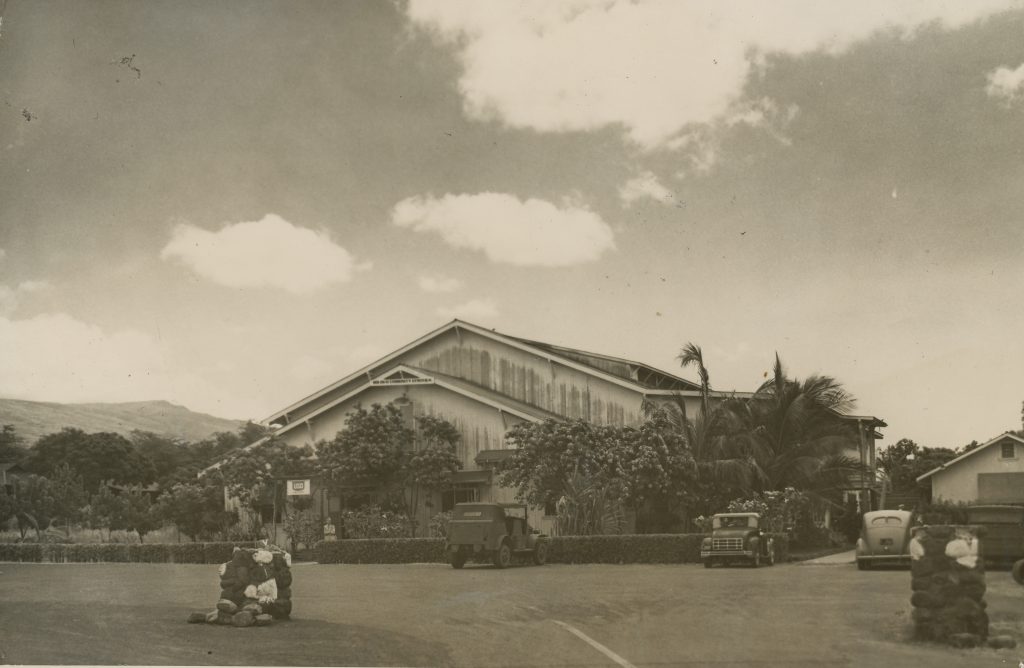
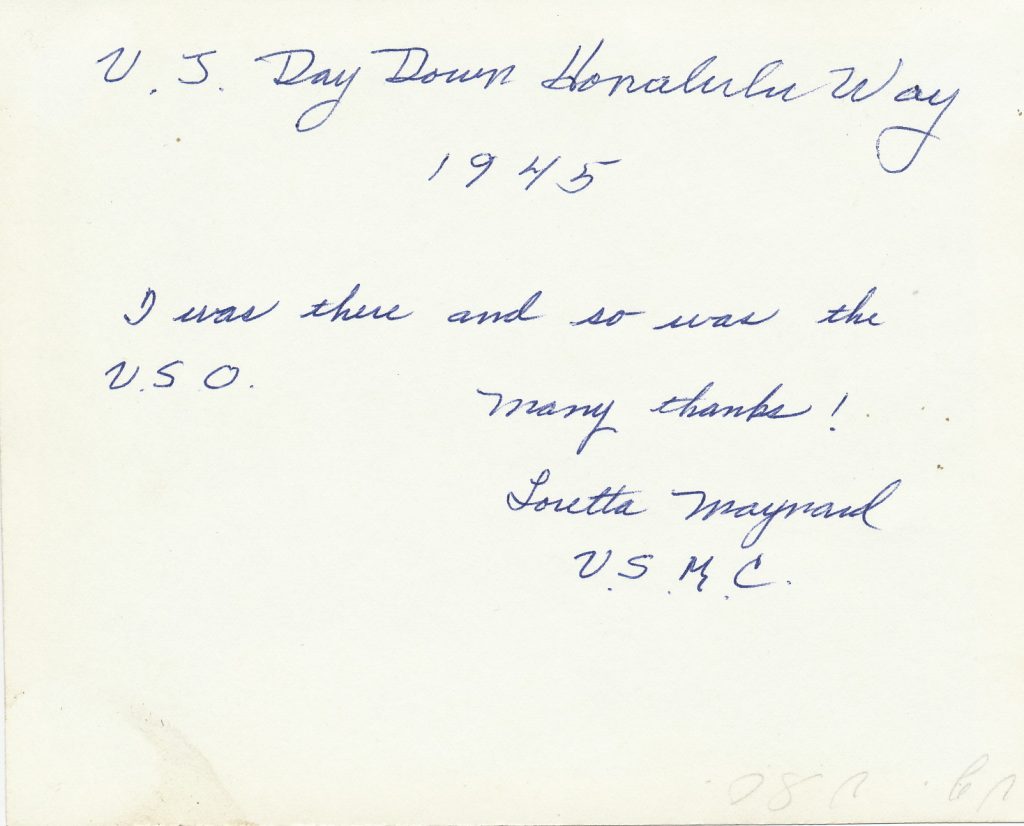
3 Responses to Inside the Archives: Down Honolulu Way: The USO and The Navy in Hawaii 1942-1947